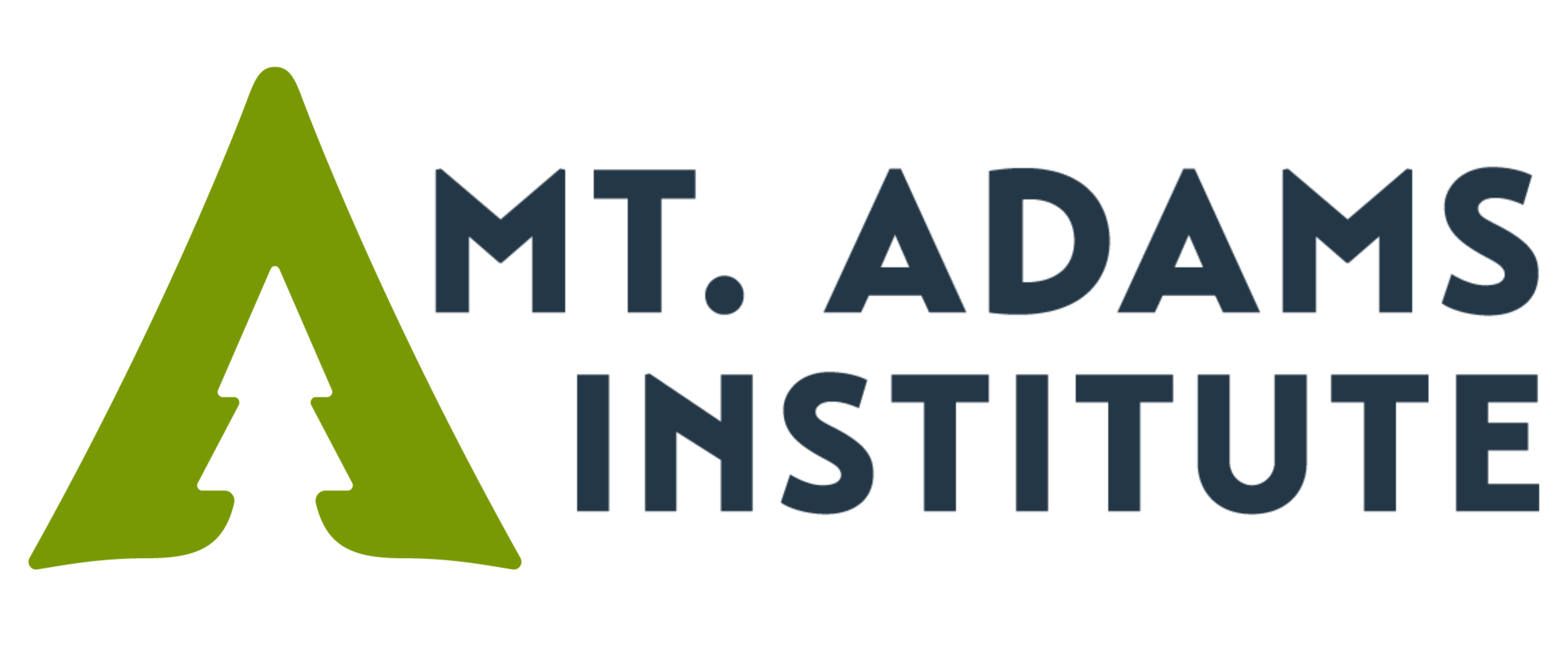Maiya McAuliffe talks about invasive species control.
“ I could not be happier in my current position, with my coworkers, or the work that I am doing.”
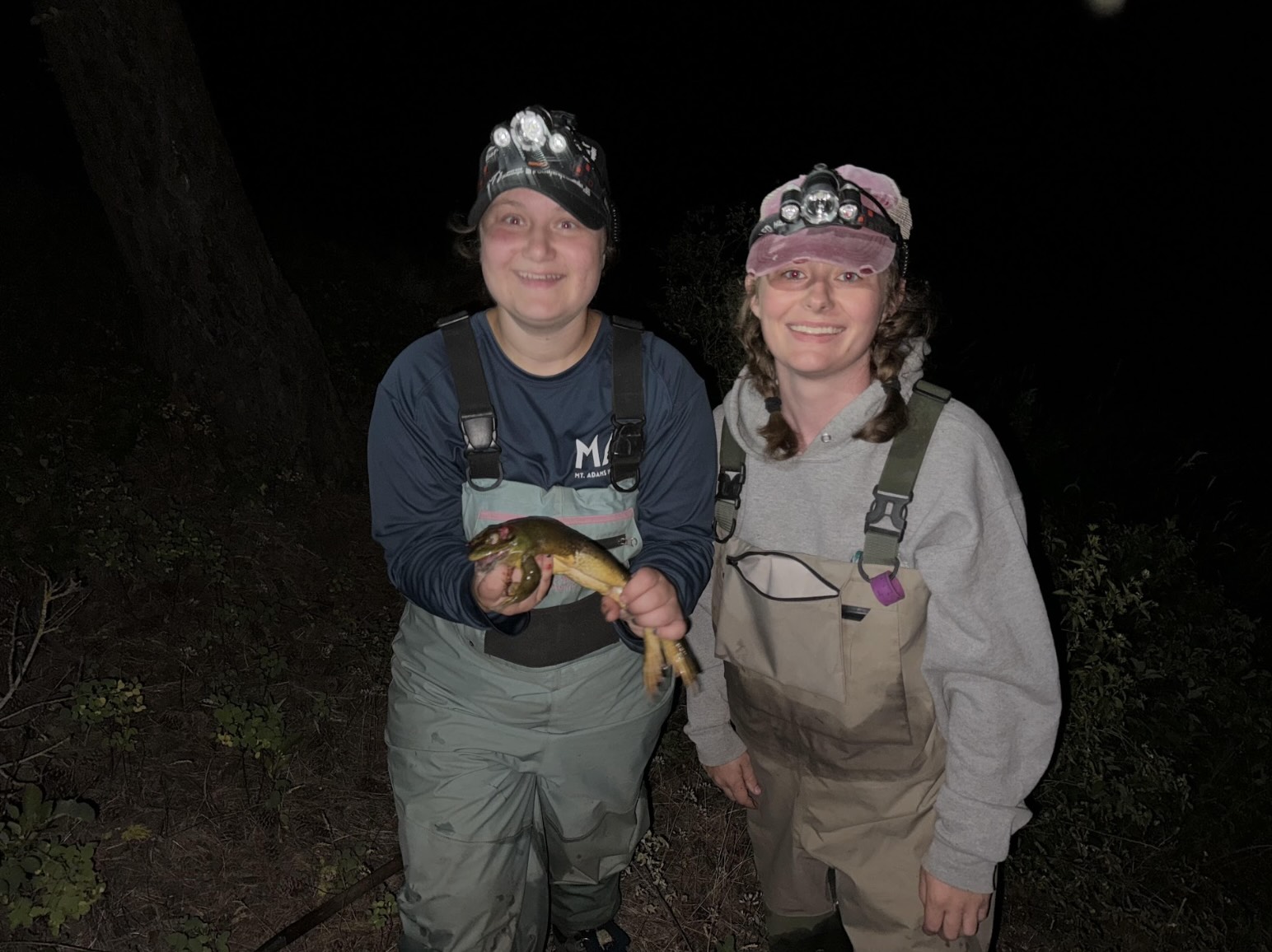
For the past three months, I have been serving as an Americorps Member at Conboy Lake National Wildlife Refuge in Glenwood, WA. This is my first position as a biology technician post graduation and I couldn’t have stumbled across a better first job. I’ve learned so much from at last being able to put my education to use doing surveys and hands on conservation work, but most importantly I’ve got to learn from people who have so many years of experience.
While eradicating bullfrogs may seem like an insurmountable task, the unique goal of this project is possible due to the valley’s isolated watershed. Since 2020, over 50,000 American Bullfrogs have been removed from the Glenwood Valley. With a partnership between the Bullfrog Removal Action Team (BRAT) and private landowners, eradication is possible and within reach. As an AmeriCorps intern I joined this project in its 5th year, where the Spotted Frog population has increased 6 fold since 2020. This means that I do not see nearly as many Bullfrogs as I do Spotted Frogs– a good sign of the project’s success so far. I feel very lucky to be a part of a project that is not only one of the largest Bullfrog removal projects ever, but also to get to see such positive project results in action; as most conservation projects require generations to see true recovery of a species/population. Research suggests that due to both the climate and biodiversity crisis we are projected to lose half of our amphibian species on the planet. According to the U.S Geological Survey (USGS) the average decline in overall amphibian populations is 3.79 percent per year, though the decline rate is more severe in some regions of the U.S., such as the West Coast and the Rocky Mountains. If this rate remains unchanged, some species will disappear from half of the habitats they occupy in about 20 years. Which only makes our efforts to protect this native population of amphibians that much more important.
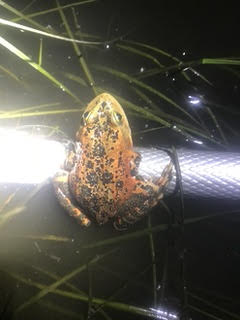
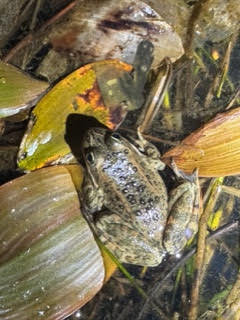
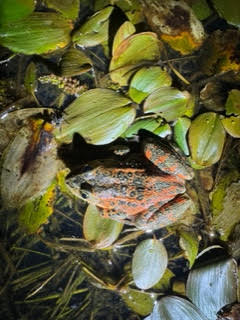
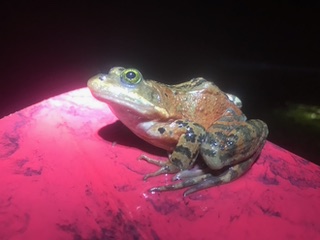
On a day to day basis, we primarily work to remove invasive American Bullfrogs (Lithobates catesbeianus), which are native to east of the Rocky Mountains but invasive to our area. They were originally brought to the Glenwood Valley by people in an attempt to farm them. During the unsuccessful farming attempt in the 1950’s, the bullfrogs escaped the original ponds and began competing with the native Oregon Spotted Frog (Rana Pretiosa). Both populations were stable until the water rights to the valley changed and the Bullfrogs began to out compete the Spotted Frogs, pushing their population in the valley to the brink of extinction. And in 2020, Conboy Lake NWR partnered with Mt Adams Resource Stewards (MARS), a local nonprofit to eradicate the American Bullfrog from the valley to save this population of Spotted Frog.
In addition to removal, my fellow Americorps member, Sophi and I, are working with the USGS to perform auditory surveys, to verify the audiomoth microphones that listen for calling Bullfrogs, as well as taking eDNA (environmental DNA) to detect the presence of Bullfrogs in various waterways around Conboy. The USGS also assigned us three sites to do presence-absence surveys for Mardon Skippers (Polites mardon), a federally endangered species of butterfly. We monitored our sites frequently as well as surveyed other sites with positive detection of the butterflies from an extensive survey that was completed in 2013. Through this process we were able to survey 5 additional sites and had positive detections at 2 of them. We are also monitoring breeding pairs of Sandhill Cranes (Grus canadensis) as they raise their colts and removing Scotch Broom (Cytisus scoparius) which is an invasive shrub that is classified as a Class B noxious weed in Washington. Mt Adams Institute (MAI) and Conboy NWR have also given us the flexibility and support to visit other wildlife refuges, learn about their projects and help with Bullfrog monitoring and control, as well as explore other jobs and roles in conservation– we even got to tour a fish hatchery.
My favorite memory of the season thus far was my second ever bullfrog hunt. We were hunting the property of one of our private property partners at Conboy. I was sent to hunt a pond by myself (no big deal, right?!) and found a large adult male Bullfrog sitting in the middle of the cattle pond. I knew the pond was deep and I would probably flood my waders, again, not a big deal. It was warm, I had brought extra clothes. So I went in, and immediately realized that I would in fact be getting wet. However I never took my eyes off the frog, spotlighting him so he could not see me coming for him. Then my feet came off the ground. I was dedicated to getting this frog. I am a strong swimmer so I treaded water, got the hand catch, swam back to the shoreline and inspected my frog. He had an open chest wound that I had not inflicted, a true testament to their incredible ability to survive, an attribute that has helped them be one of the most resilient and vigorous invasive amphibians on the planet.

On a more personal level, going into this season I was nervous about living in a new town, with a bunch of new people. I had also never really found a group of people who really felt like ‘my’ people. After settling in at Conboy and getting to know the rest of the crew it became clear that I had found them– from having a good time together doing the actual work, to playing games, or supporting each other when life gets tough, the people here got me and had my back. That also includes the supervisors at MAI and with the US Fish and Wildlife Service who have been very supportive of my professional goals while also caring about my personal wellbeing and providing a strong sense of support as well.
As the first half of the season comes to a close, I could not be happier in my current position, with my coworkers, or the work that I am doing.

